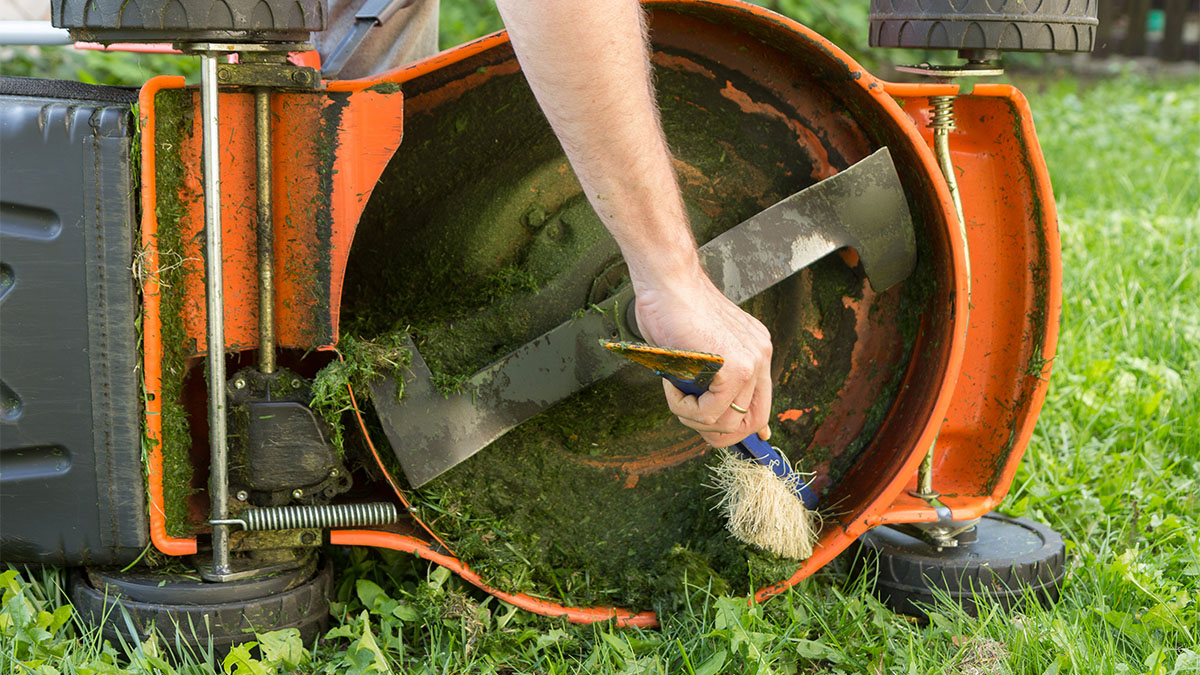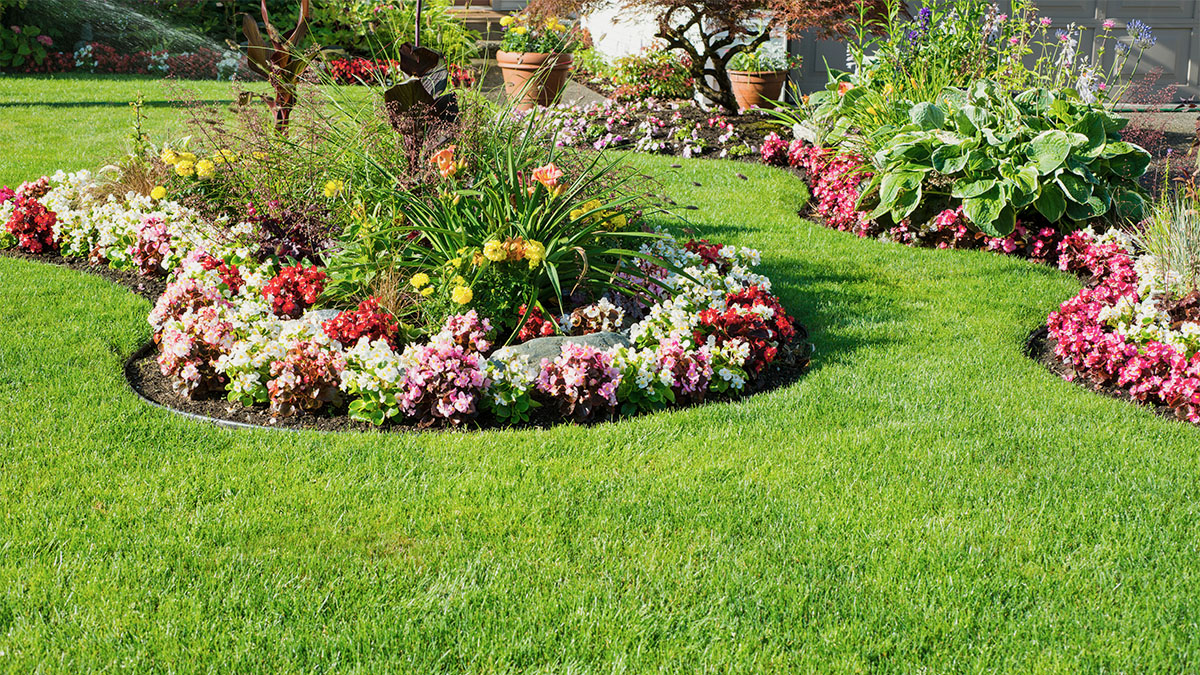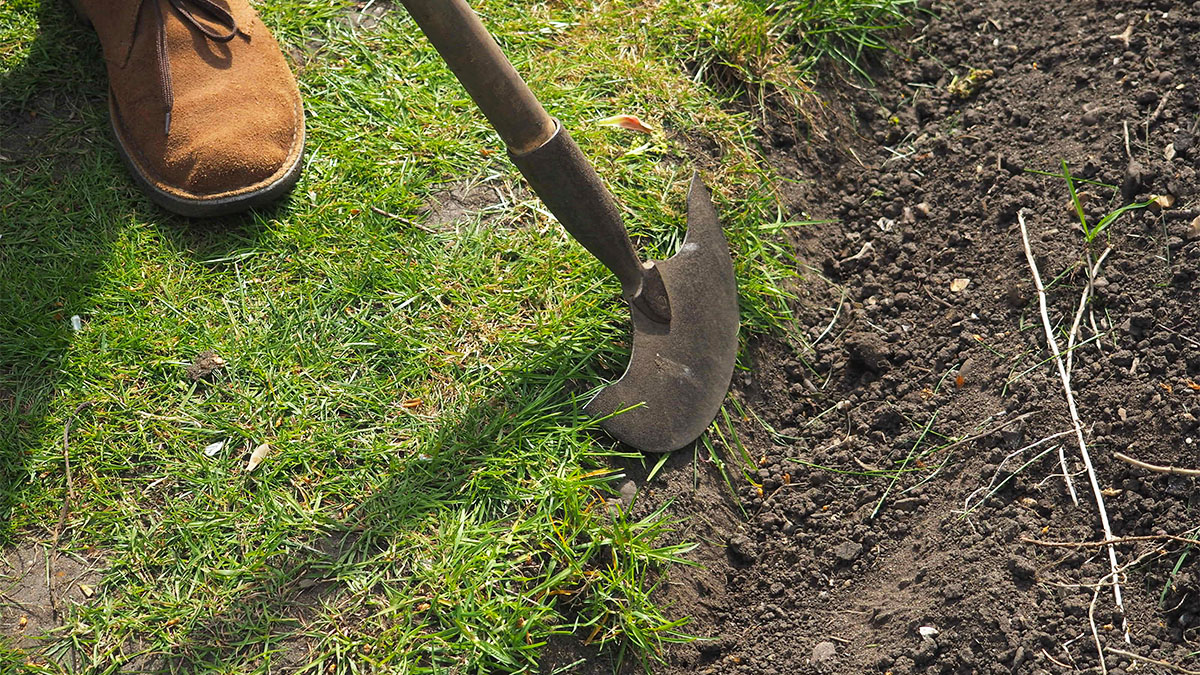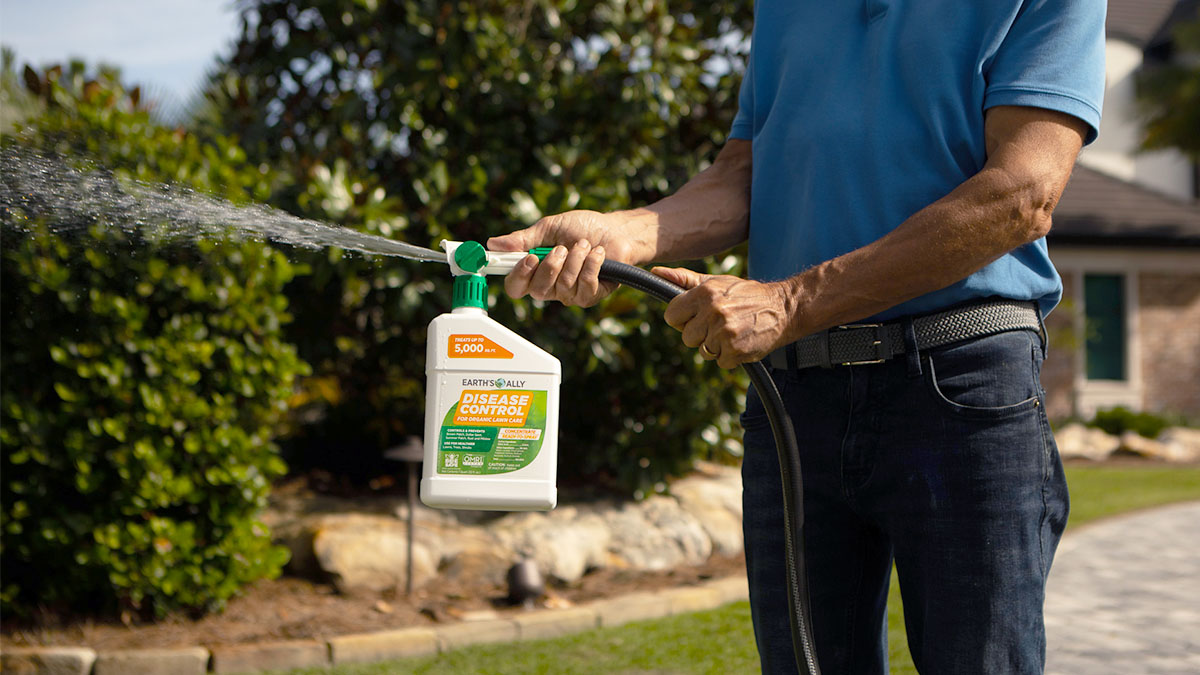Written By Angelo Randaci, Earth’s Ally® Horticulturist
For many dads, maintaining a beautiful lawn is a peaceful, relaxing and even therapeutic activity. When a dad fires up the lawn mower and starts cutting those crisp rows in the grass, he finds a sense of satisfaction and accomplishment in seeing the yard transform from shaggy to manicured. There’s something soothing about the steady hum of the mower and the fresh, earthy scent of newly cut grass.
Dad can take pride in a job well done by surveying the neatly mowed lawn when he’s finished. At the end of the day, the whole family can admire his handiwork and the transformed yard. The refreshed landscape is a gift to the dad that the family can all enjoy. Father’s Day lawn care is a fun way to celebrate dad while sprucing up the home’s curb appeal.
As Father’s Day approaches, we’re sharing some eco-friendly tips for dads who love their lawns.
Mowing Your Lawn
Keeping your lawn properly mowed is one of the primary components of a successful lawn care program. While grass has a remarkable capacity to rejuvenate itself, cutting grass blades must be followed by a recovery period. Limiting this recovery period will limit grass stress which in turn will limit insect infestation and numerous diseases as well as weed growth.
- Before you mow, clear the area to be mowed of any debris such as sticks, stones, toys, or hoses.
- Know the recommended mowing height for your species of grass. Recommended mowing height for tall fescue for instance is 3-4 inches.
- Mow during the early evening hours when temperatures are cooler. Do not mow when the grass is wet. Excess moisture on grass blades can clog mowers and leave clumps of wet blades scattered throughout your lawn. This will also create an extra cleaning chore of wet blades from underneath your mower deck.
- Do not mow during periods of drought. Keeping tall grass during low water periods will avoid plant stress.
- Never remove more than 1/3 of the leaf blade at any one cutting. Cutting too much of the leaf blade at once can cause stress to your turf.
- Mow weekly during the active growing season and make two passes over the entire lawn for a manicured look.
- Change your mowing direction each time you mow. Mow diagonally one time, then vary the direction mowing parallel, then next time mow perpendicular. This will keep an even cut and avoid compaction of the soil. Overlap the previous row by a few inches as you mow in the opposite direction.
- Tip: A mulching mower will return leaves into the soil. This adds nutrients and helps build good, organic soil.

Lawn Mower Maintenance Checklist
- If you have a gas mower, check the manual for when to change oil and filters.
- Clean your mower with a garden hose. Disconnect the spark plug wire first.
- Clean the undercarriage of your mower to remove layers of grass that may be caked around the mower blade.
- If using an electric mower, check the power cord for any cuts or abrasions and apply electrical tape to these areas or replace with a new cord.
- Sharpen your blades twice in a season or every 20-25 hours of use. Dull blades create a ragged appearance, uneven blade height, and brown leaf tips.
- Check fuel and oil levels before mowing and do not fill your gas tank while it is parked on your lawn.

The Finishing Touch: Edging Your Lawn
Clean, manicured edges define areas of turf from garden beds, tree rings, and driveways. The method you choose may depend on the size of your lawn and how much effort you are willing to put in. For small areas, manual edging is a good option. There are various tools for this job but all that is needed is a straight-bladed spade. For a natural look, make a beveled edge 3 to 4 inches below the soil surface. For sidewalks and driveways, a rotary manual edger comes in handy. This is a circular tool designed to cut between the driveway and the grass.

For larger areas, you may wish to go with electric or gas-powered edgers which will do the job quickly. The last option is to install some sort of permanent edging using any of the various materials available including pavers, stone, and plastic.

Feed & Fertilize Your Lawn Naturally
Organic fertilizers are a safe, natural alternative to synthetic fertilizers. Because they are rich in organic matter, they help improve soil structure by promoting the growth of beneficial microorganisms. These microorganisms break down organic matter making nutrients more available to the plant roots.
They also provide long-lasting results by releasing nutrients slowly over time. This slow-release process promotes healthy root growth which will result in a more resilient grass that will better withstand drought, pests, and disease.
Unlike chemical fertilizers, organic fertilizers do not contain harmful chemicals that can pollute our waterways and leach into groundwater.
Organic fertilizers and are safe for children and pets because they do not contain harmful chemicals that can be absorbed through the skin or ingested.
When choosing an organic fertilizer, look for a brand with a reputation for using high-quality ingredients and one that has positive reviews from people who have used the product.
Watering Your Lawn for Healthy Turf
Adopt a watering program where you apply just enough water to maintain healthy turf without wasting water. Avoid water running on driveways and walkways or into sewer systems. If puddles form on grass during watering, turn off the water and allow the water to soak into the soil. Avoid running oscillating sprinklers during windy weather; a substantial amount of water will be lost to evaporation or where water is not needed.
Frequent shallow watering produces shallow root systems that can succumb to the hot, dry conditions of summer. Applying too much water at a time, however, can reduce air spaces in the soil and drown roots.
It is best to water infrequently but when you do, make sure you water deeply. This will encourage deep roots yet allow the soil to dry slightly between watering periods. Deeper roots will result in healthier more drought-resistant grass.
How often to water depends on the region in which you live. Weekly watering during the active growing season will suffice for areas that receive 25 or more inches of rain, whereas you may need to water twice weekly in drier areas of the country. Your lawn will need less water after the growing season.
Tip: A simple way of monitoring rainfall is with a rain gauge. Hang it in an area unobstructed by trees or buildings and check it weekly. This will tell you exactly how much water your lawn (and garden) received.
Lawn & Turf Diseases
Even the most vigilant dad will sometimes have to contend with turf problems. A few of the main diseases include brown patch, dollar spot, summer patch, rust, and mildew. When choosing a spray, select one that works well, will cause minimal damage to nontarget insects, plants, or animals while being safe to use in areas where children and pets play. Avoid highly toxic chemicals that may kill nontarget creatures such as earthworms and microorganisms that contribute daily to making your soil healthy.
Earth’s Ally Disease Control for Lawns will kill and control common turf diseases while providing a safe habitat for your family and pets while also being bee safe, when used as directed. A 1-quart container treats up to 5,000 sq. ft. It will do more than treat your lawn; use it on all trees, shrubs, and garden plants. The ready-to-spray formula is easy to apply. Just attach it to your garden hose and spray. The active ingredient, citric acid is a safe product used in the food industry to prevent mold, yeast, and fungus. Citric acid is found naturally in all citrus fruits. If you’ve ever bit into an orange or lemon, you’ve tasted citric acid.

Killer Curb Appeal: Killing Common Broadleaf Weeds
Broadleaf weeds can take root and grow in the most inconvenient places: Between patio pavers, in sidewalk and driveway cracks, around playground equipment, and in your mulch beds. Kick these weeds to the curb using Earth’s Ally Weed & Grass Killer. Powered by sea salt, it kills weeds to the root so they won’t grow back.
Tip: Have weeds in the middle of your lawn or desirable plants? Earth’s Ally is a non-selective herbicide so you want to avoid overspray. A common gardener trick is to cut the bottom out of a disposable cup and use it as a funnel around a wed to contain the spray. Use the stream setting on your sprayer (instead of mist) to target the roots.

